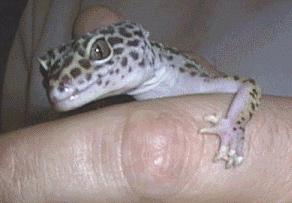Lizard Dysecdysis
Jump to navigation
Jump to search
| This article has been peer reviewed but is awaiting expert review. If you would like to help with this, please see more information about expert reviewing. |
Normal sloughing is a sign of good health in a reptile. Dysecdysis is difficulty in sloughing, usually caused by low environmental humidity. Lizards with dysecdysis tend to retain their sloughs at the extremities (distal digits, tail tip, dorsal spines). Short term consequences include difficulty shedding due to dehydration of the slough; the long term involves dehydration of the lizard, especially if coupled with inappropriate water provision. Skinks and geckos may retain slough around their eyes, leading to conjunctivitis.
Aetiology
- Low humidity
- Ectoparasites
- Dermatitis
- Systemic disease
Treatment
- Soak affected areas in warm water for 5-10 minutes then manually remove with a gently abrasive wet surface.
- Raising environmental humidity by regular misting of the interior of the cage as well as the animal, providing large surface-area shallow trays of water for evaporation, and shallow warm water baths. A small enclosure within the vivarium can be added to create localized increased humidity by adding a water-absorbent bedding such as sphagnum moss or cotton wool.
Literature Search
Use these links to find recent scientific publications via CAB Abstracts (log in required unless accessing from a subscribing organisation).
Lizard Dysecdysis publications

